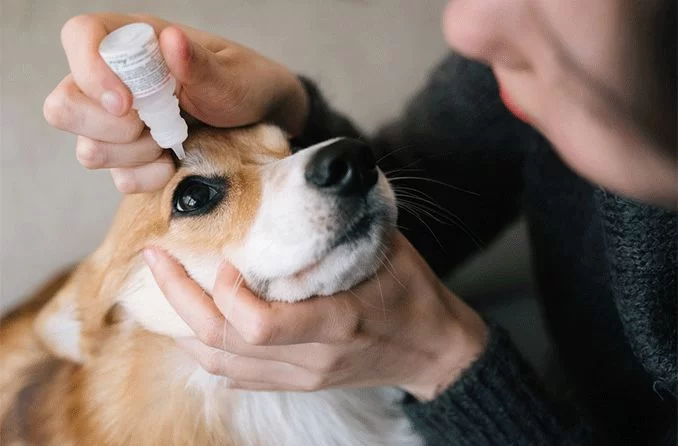How to Treat a Pet's Eye Infection: Effective Solutions for Your Pet's Eye Health
- 1. Understanding Eye Infections in Pets
- 2. Common Symptoms of Eye Infections in Pets
- 3. Treatment Options for Pet Eye Infections
- 4. When to See a Veterinarian for Eye Infections
1. Understanding Eye Infections in Pets
Just like humans, pets can suffer from eye infections, which can cause discomfort and lead to serious health problems if left untreated. Eye infections in pets are typically caused by bacteria, viruses, fungi, or allergies. The infection can affect various parts of the eye, including the cornea, conjunctiva, and eyelids, leading to redness, swelling, and discharge. Understanding the nature of eye infections can help you take the right steps to treat them effectively.
2. Common Symptoms of Eye Infections in Pets
If your pet is experiencing an eye infection, it may show several signs that can be easily noticed. Some of the most common symptoms of eye infections in pets include:
Redness and Swelling
One of the first signs of an eye infection is redness and swelling of the eye and surrounding areas. The eye may appear irritated, and your pet might paw at it to relieve discomfort.
Excessive Tearing or Discharge
Pets with eye infections may produce excessive tears or have a noticeable discharge coming from their eyes. This discharge could be clear, yellow, or green, depending on the severity of the infection.
Squinting or Winking
Squinting or frequent winking could indicate that your pet's eye is in pain due to the infection. Your pet may also become sensitive to light.
Red or Inflamed Eyelids
Infected eyelids may become inflamed and puffy. Your pet might also have difficulty keeping its eyes open because of the irritation and discomfort.
3. Treatment Options for Pet Eye Infections
Once you recognize the symptoms of an eye infection in your pet, it’s important to begin treatment as soon as possible. Here are some common treatment options:
Cleaning the Eye
Gently cleaning your pet's eye with a sterile saline solution can help remove any debris and excess discharge. It’s important to use a clean cloth or cotton ball to wipe away the discharge and prevent it from spreading the infection further.
Prescription Medications
Veterinarians may prescribe topical medications such as antibiotic or antifungal eye drops, ointments, or creams to treat the infection. Always follow the veterinarian's instructions for applying these medications to ensure proper healing.
Oral Medications
If the infection is severe or caused by bacteria, oral antibiotics or antiviral medications may be prescribed to help combat the infection from within. It’s important to complete the full course of medication, even if symptoms improve, to prevent the infection from returning.
Home Remedies
Some pet owners may try home remedies like chamomile tea or diluted apple cider vinegar to soothe their pet’s irritated eyes. However, always consult with your veterinarian before attempting any home remedy to ensure it is safe for your pet.
4. When to See a Veterinarian for Eye Infections
While some minor eye infections can be treated at home, it is important to seek veterinary care if:
- Your pet’s symptoms do not improve after a few days of at-home treatment.
- The infection seems severe, with excessive redness, swelling, or discharge.
- Your pet is in significant pain, squints frequently, or avoids opening its eye.
- You notice vision problems, such as your pet bumping into things or avoiding light.
If your pet's eye infection is not addressed promptly, it could lead to more serious complications, including permanent damage to the eye. Always err on the side of caution and contact a veterinarian if you are concerned about your pet’s health.
If you need expert advice or treatment for your pet’s eye infection, visit Hidden Brook Veterinary for professional care and guidance.












